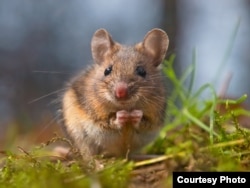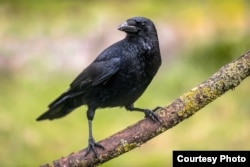In a past report of Everyday Grammar, we talked about how to describe your favorite character from a book you had read. We looked at the children’s book, Mrs. Frisby and the Rats of NIMH by Robert C. O’Brien to help us describe my favorite character, Mrs. Frisby.
We considered how O’Brien used adjectives to describe Mrs. Frisby’s physical appearance or how she looks. We thought about how Mrs. Frisby talks with other characters like Jeremy the crow or black bird by questioning him or how she used commands. Finally, we looked at her thoughts and memories.
In today’s Everyday Grammar, we will finish our discussion about Mrs. Frisby, who is a field mouse and a mother. We will look at her actions and the effect she has on other characters.
The character’s actions
Another way we can describe our favorite character is by looking at the character’s actions throughout the story. We can look at what the character does and how the character acts.
In one part of the story Mrs. Frisby helps to set Jeremy free from the string in which he is tied up. Here we see that Mrs. Frisby is hard at work, cutting through the string to help Jeremy.
As the characters talk, we realize why Mrs. Frisby is in such a hurry… Jeremy sees Farmer Fitzgibbon’s cat named Dragon.
Mrs. Frisby showed courage through this experience. She was willing to help the crow escape from Dragon without any expectation that he would help her. She was selfless or not thinking about herself or her safety during this time.
The author uses two descriptive verbs to show Mrs. Frisby’s actions, “cut” and “gnawing.”
Mrs. Frisby uses those sharp teeth to cut through the string. “Gnawing” is biting at something repeatedly. Some animals gnaw wood, for example, to sharpen their teeth.
Through these two descriptive verbs we can see Mrs. Frisby’s actions very clearly in our minds. The verbs paint a picture of what she is doing.
Other characters’ thoughts
The final way that we can describe our favorite character is looking at how other characters think about or act towards them.
Remember Jeremy’s reactions to Mrs. Frisby when she is trying to help him?
“Come down here,” she said. “I’ll get the string off.”
“How?” said the crow dubiously.
“Don’t argue. I have only a few minutes.” She said this in a voice so authoritative that the crow fluttered down immediately.
Here writer O’Brien describes Jeremy’s reaction to Mrs. Frisby. Note the adverbs O’Brien uses.
To be dubious is to be unsure about something, to question an idea, maybe. To flutter is to flap the wings as quickly as possible. The word can suggest some fear or worry as well.
Jeremy’s questioning of Mrs. Frisby’s ability was very brief. She answered with a single command and he obeyed at once.
Final thoughts
In this week’s report we finished our discussion about how to describe your favorite character. We considered how the author uses descriptive verbs to describe Mrs. Frisby’s actions. We even considered how other characters, like Jeremy, respond to her. The author uses adverbs to describe Jeremy’s reactions to Mrs. Frisby.
Let’s finish our description of Mrs. Frisby below. The first four sentences are how we described Mrs. Frisby with her physical appearance, her thoughts and words.
Mrs. Frisby is a small, brown field mouse and mother. She uses her sharp teeth when finding food for her children. Although Mrs. Frisby is a curious mouse, she always questions the situation. She uses her mothering skills to help others in need.
For example, Mrs. Frisby saves Jeremy the crow from Dragon, the farmer’s cat, by gnawing through a string. Jeremy is at first unsure about accepting Mrs. Frisby’s help, but her command in the situation is undeniable. Jeremy does as she says and is rescued.
Homework assignment
Let’s end this report by finishing our homework assignment. Add to the description of your character. What is the character doing? Or how is the character behaving? Find descriptive verbs, they show the action of the character.
Next, look at where the other characters interact with your favorite character. How does that other character respond, feel, or behave? How does your favorite character affect other characters? Look for adverbs when finding how the other characters react.
Write these sections down and send them to us at learningenglish@voanews.com.
We will look at a few descriptions and give some feedback in a future report of Every Grammar.
I’m Faith Pirlo
Faith Pirlo wrote this lesson for VOA Learning English.
Describe your favorite character in the comments below or write to us at learningenglish@voanews.com.
___________________________________________________________________
Words in This Story
character – n. a person (or animal) who appears in a story, book, play, movie, or television show
gnaw – v. to bite at something over and over
strand – n. a thin piece of hair or string
dubiously – adv. with uncertainty or hesitation
authoritative – adj. able to be trusted as being accurate or true
flutter – v. to flap the wings rapidly
_______________________________________________________________________
What do you think of this story? We want to hear from you. We have a new comment system. Here is how it works:
- Write your comment in the box.
- Under the box, you can see four images for social media accounts. They are for Disqus, Facebook, Twitter and Google.
- Click on one image and a box appears. Enter the login for your social media account. Or you may create one on the Disqus system. It is a blue circle with “D” on it. It is free.
Each time you return to comment on the Learning English site, you can use your account and see your comments and replies to them.












Forum